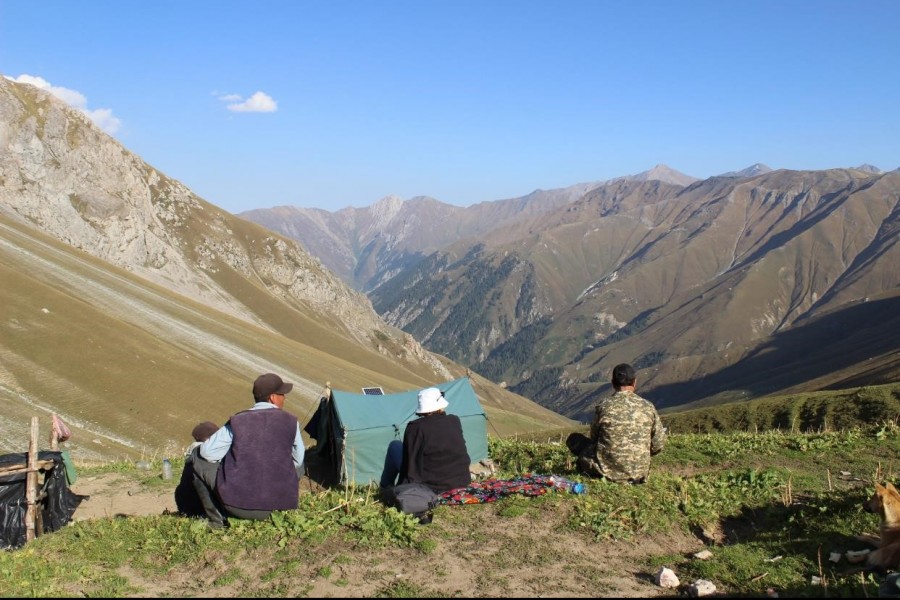
From 2021 to 2023, the GRI method was applied in three pasture areas of the Naryn and At-Bashy Rayons of Naryn Oblast on the territory of leskhozes of the same name and on the territory of Jerge-Tal Aiyl Aimak.
Six local shepherds were trained and practiced rotational livestock grazing according to the schedule on the plots located in the neighbourhood, which allowed them to conduct coordinated work. Monitoring points were identified and more than 20 metal grazing exclusion cages were installed to observe the condition of the vegetation cover in the pasture plots. Within these cages, the grass was shielded from consumption and trampling by animals. Shepherds assessed changes taking into account such indicators as regeneration capacity, frequency and intensity of grazing, and the results of observations were entered into the “Shepherd's Diary”. The GRI method requires continuous monitoring of resource conditions, but the year-end assessment is an indication of the shepherds’ efforts and their work during the entire season. At the end of 2022, a final evaluation of the GRI practice was conducted by specialists from the CAMP Alatoo PF and leskhozes, who made recommendations for further regulation of the number of grazing animals, observations, etc.
The project investigated the problem of semi-wild/haphazard grazing of livestock that are driven to a particular pasture and remain for one or more seasons. Herds of horses, yaks and dry cows are usually grazed in this way. The livestock owners check the safety and integrity of the herd from time to time. Such a grazing method may be profitable for the livestock owners in the short term, but it is destructive for the resources: the seasonality of pasture use is disturbed, conflicts between livestock and landowners increase, and the budgets of the pasture committees are not replenished due to non-payment for the pasture tickets. The authors of the research came to the conclusion that a system of identification of animals will help to solve the problem of haphazard grazing and, consequently, will facilitate the search for their owners. The researchers noted that in order to mitigate conflicts between local residents, summer and winter pastures are fenced in settlements to block access to “ownerless” livestock. The problem is described in detail in the video, which was specially developed and aimed at increasing the responsibility of livestock owners who leave their livestock in pastures unattended.
A bridge was built in the At-Bashy leskhoz to enable residents of the At-Bashy village to safely cross the river. A bridge was constructed in the At-Bashy leskhoz to provide the residents of the At-Bashy village with the opportunity to safely drive their livestock across the local river to the pastures. Additionally, it opened access for foresters to the nursery. A road leading to several pastures was rehabilitated in the Naryn leskhoz to secure the transportation of shepherds' belongings and livestock to remote and undeveloped pastures and to provide access to resources for more users. The problem of growing and irrigating fodder crops in the Jerge-Tal Aiyl Aimak was solved by mechanical cleaning of the 3,775-meter-long Kyzyl-Jyldyz riverbed. A watering point was also constructed here.
In 2023, the proposals on installation of fencing at the sites for fodder cultivation in Naryn and At-Bashy leskhozes and organization of facilities for veterinary and zootechnical measures were supported.
The educational activities were organized for two audiences - representatives of leskhozes, resource users and shepherds practicing the GRI method on pastures. The trainings for the first group contained theoretical and practical sessions, which resulted in the development of plans for grazing on the territories of leskhozes having the status of state lands. The total number of participants amounted to 50 people.